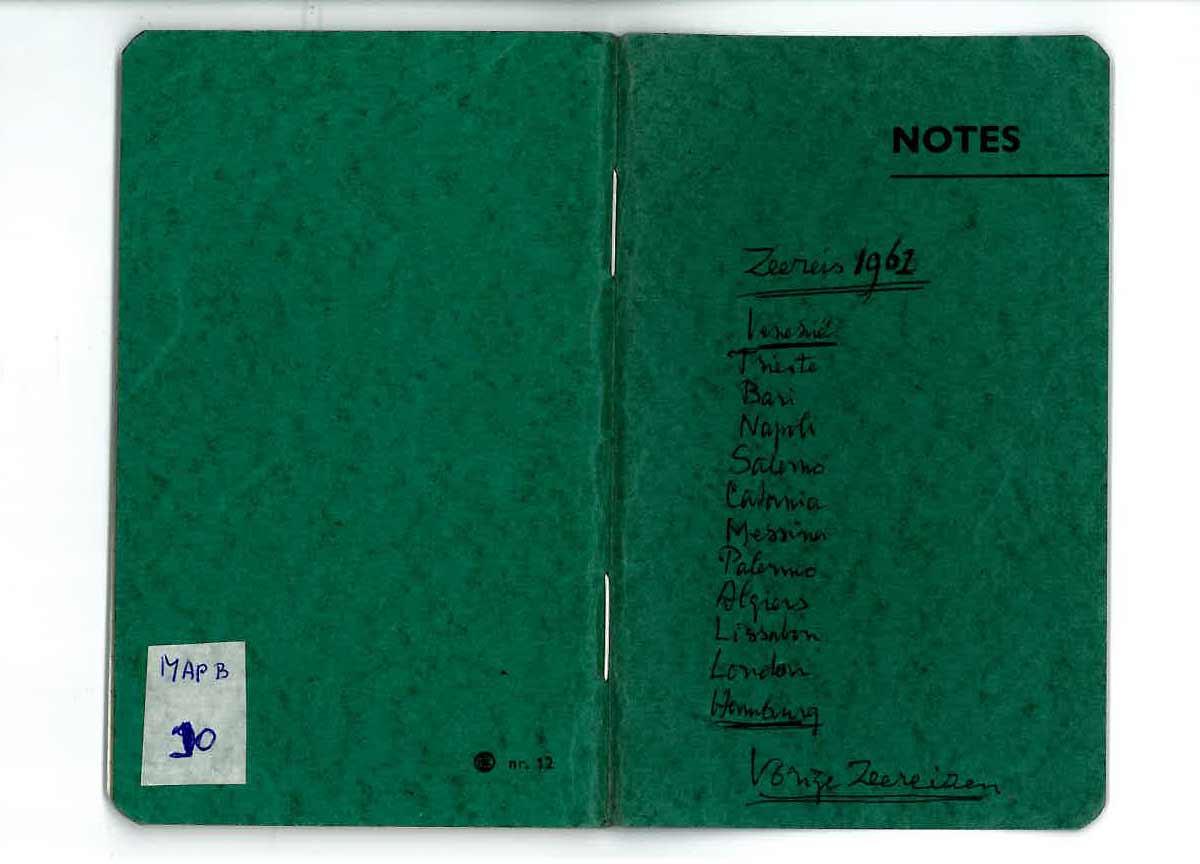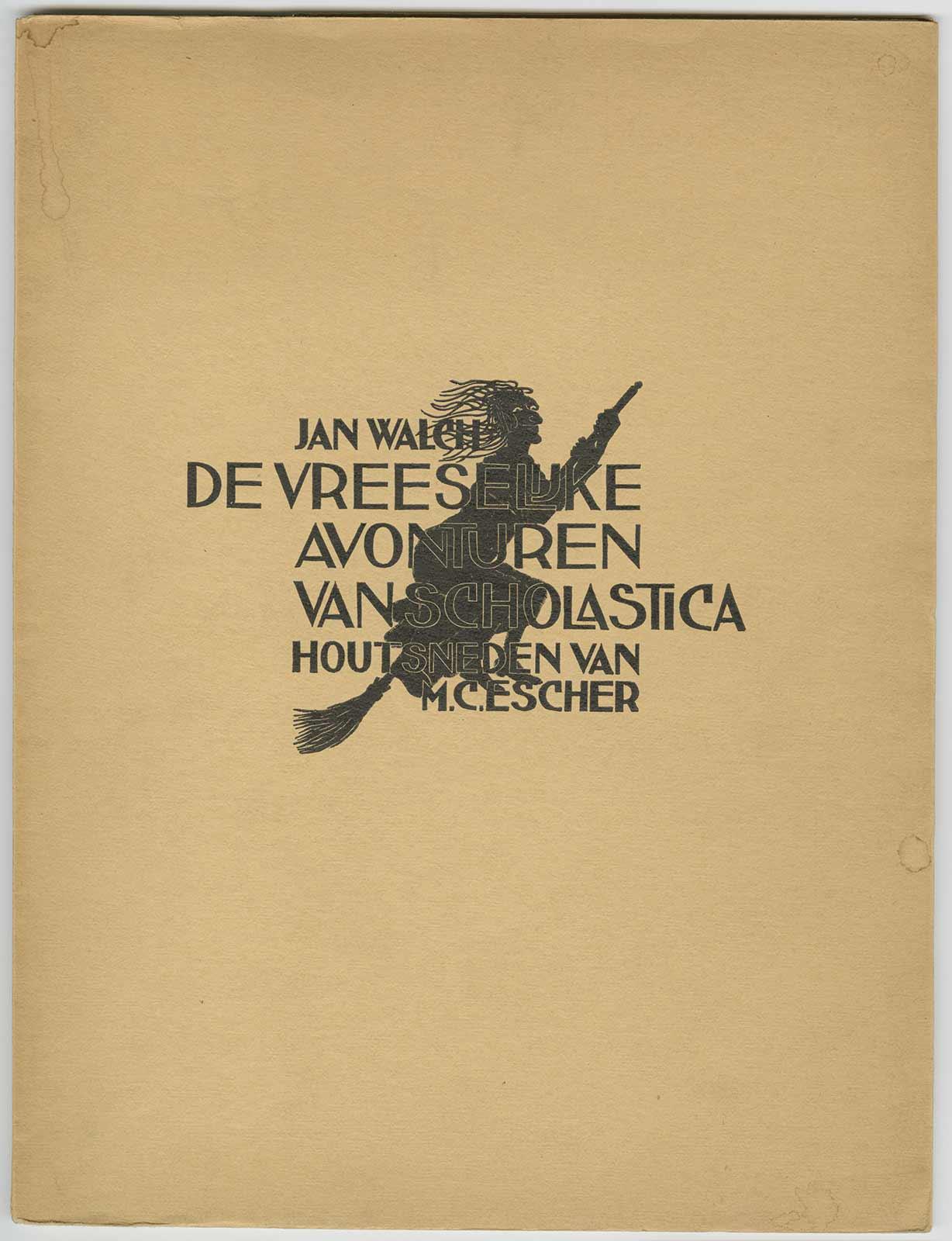

In June 1952 Escher created the lithograph Gravity, which, due to its subject, fits perfectly in the series of planetoids and stars that he depicted between 1948 and 1954. His celestial bodies all appear to be set in the same science fiction world, which somehow seems an unlikely place for Escher to feel at home in. The first wood engraving, Stars (1948), seems deceptively simple, but Gravity, Double Planetoid (1948) and Tetrahedral Planetoid (1954) are a lot more complex. These planetoids look as if they might be inhabited by civilisations somewhat like our own.
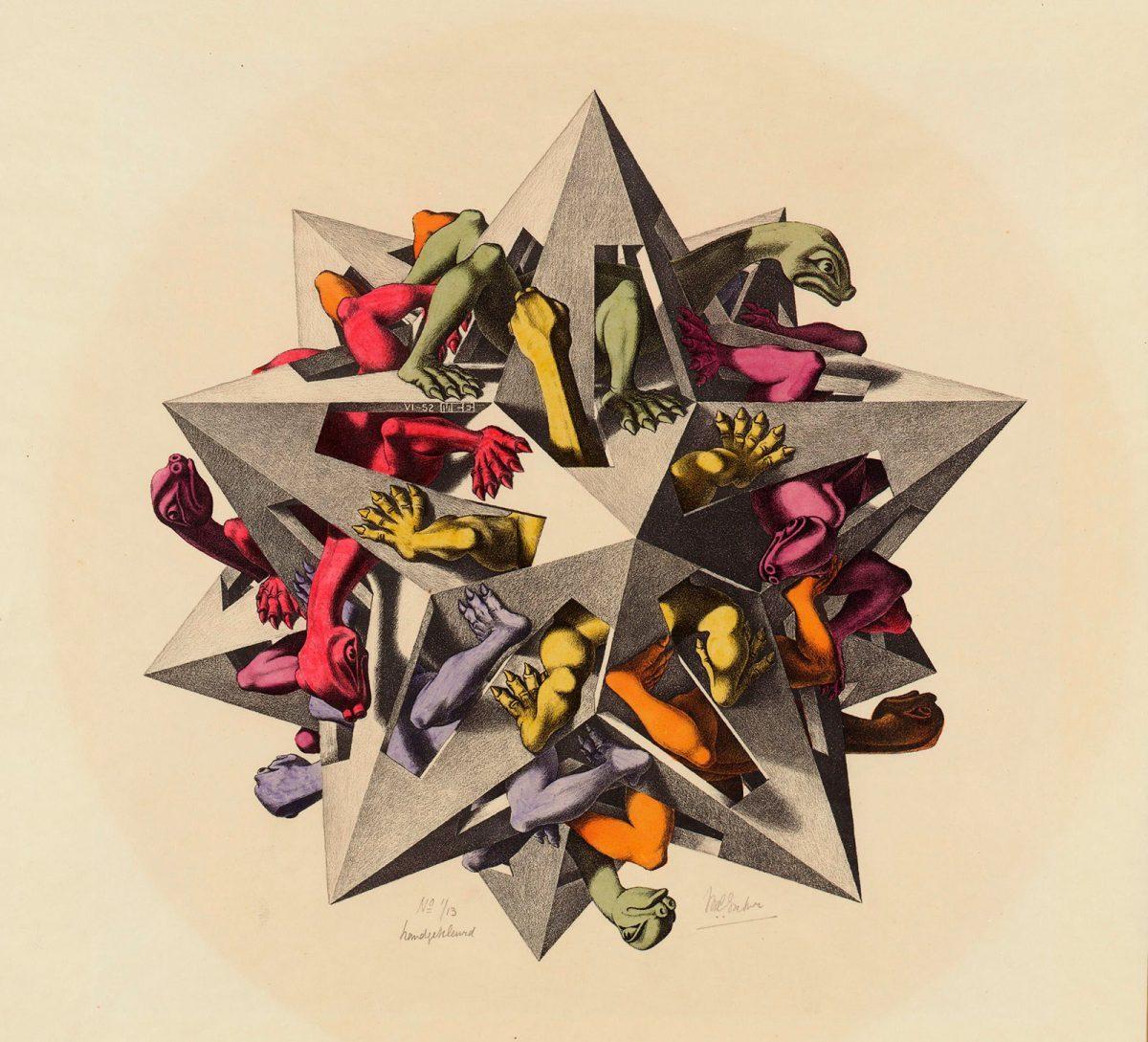
The planetoid featured in Gravity is a small stellated dodecahedron. Its body has 12 five-pointed stars each occupied by a pyramid. Escher loved this spatial figure because it is simultaneously simple and complex. He used it multiple times in his work. Here each star is a prison for a monster with a long neck and four paws. The body is trapped but the body parts are trying to escape. Each pyramid has five trapezoidal doorways from which the neck and paws protrude. Because there are only five, the monsters have no tails. To distinguish them from each other, Escher gave them each their own colour in this lithograph. Because there are 12 prisons, there are 12 monsters. Six coloured pairs (red, orange, yellow, magenta, green and indigo) with each one directly opposite its counterpart. Originally Escher planned to use turtles in Gravity *. With this in mind, one could say these creatures are indeed turtles, but their shells have been replaced by the prison they are in.
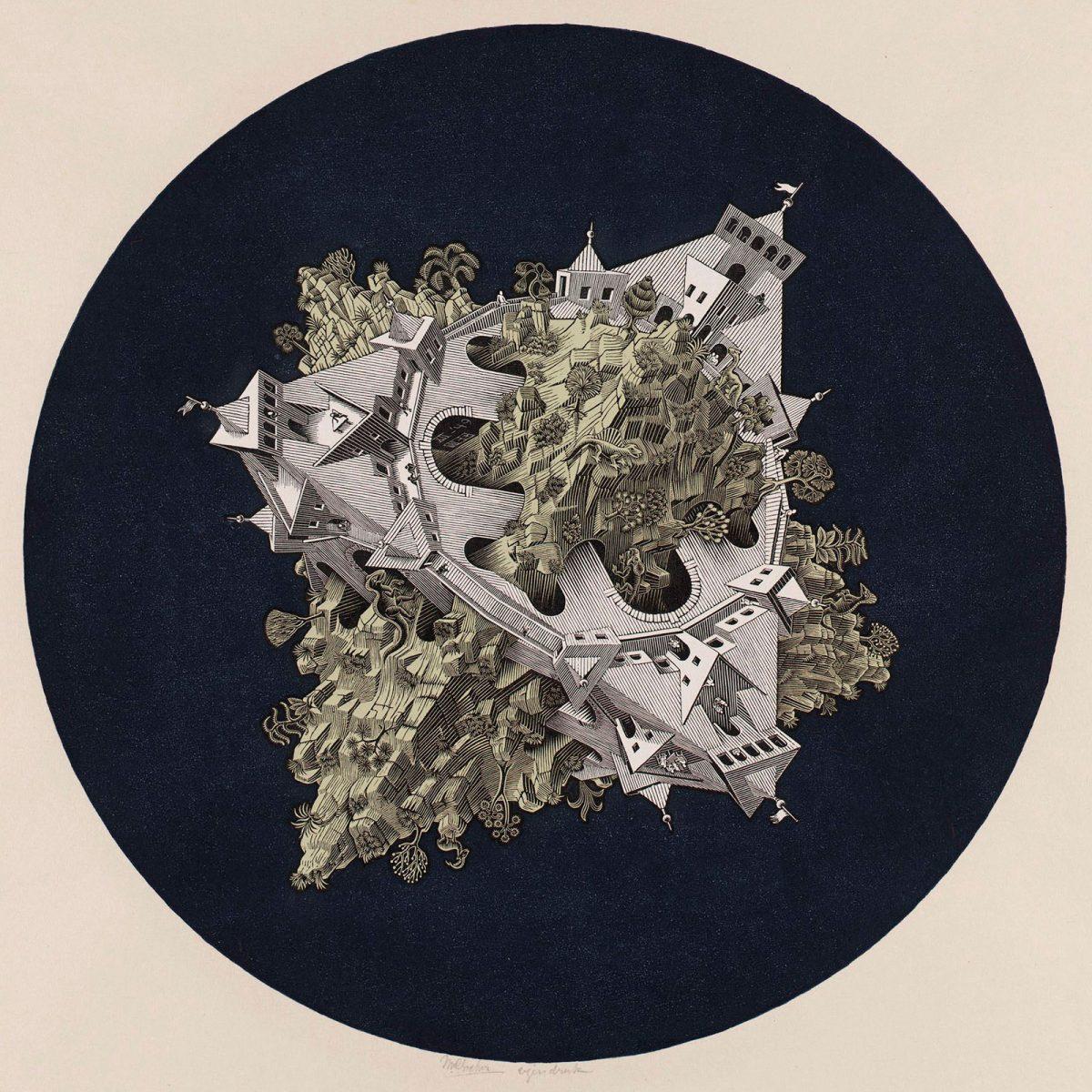
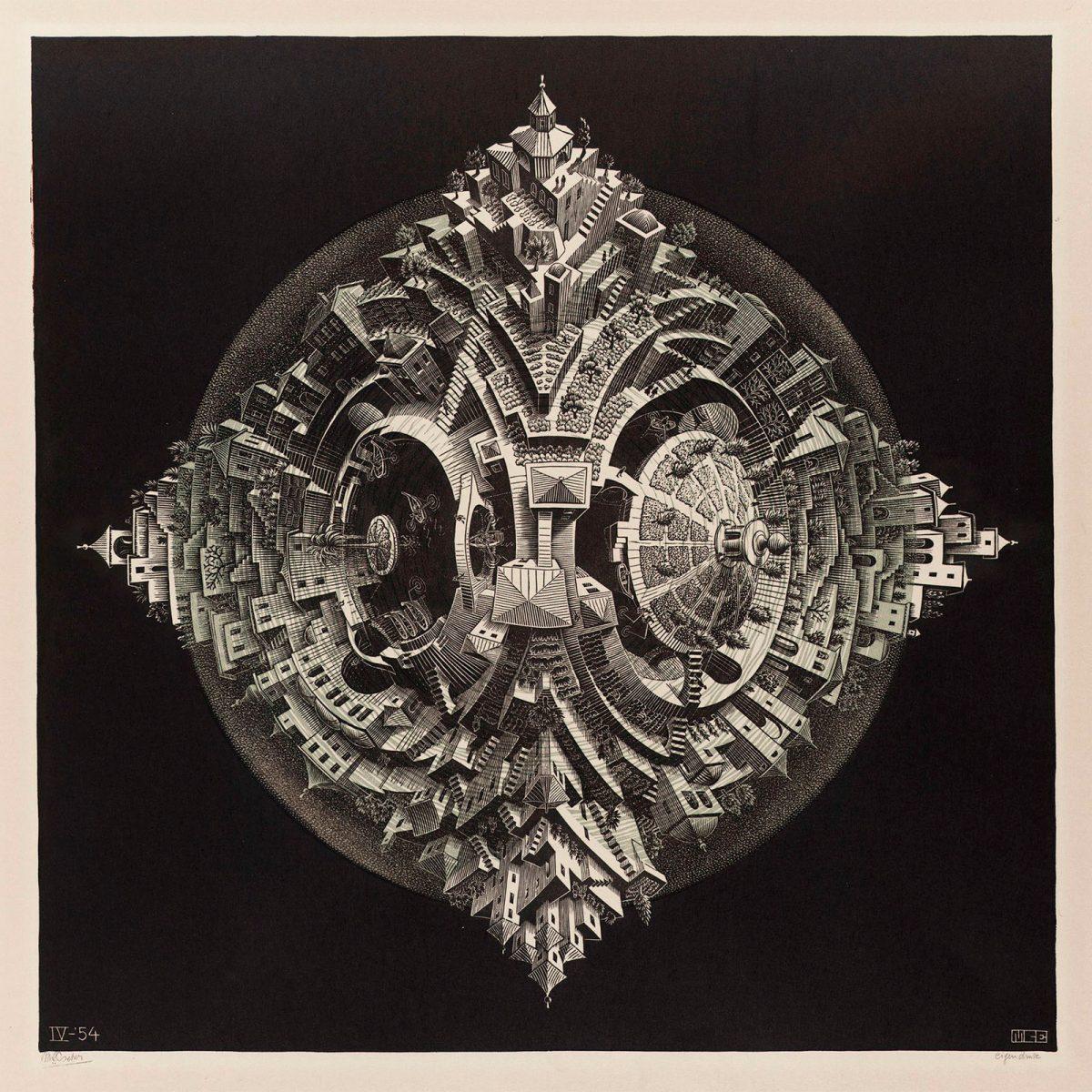
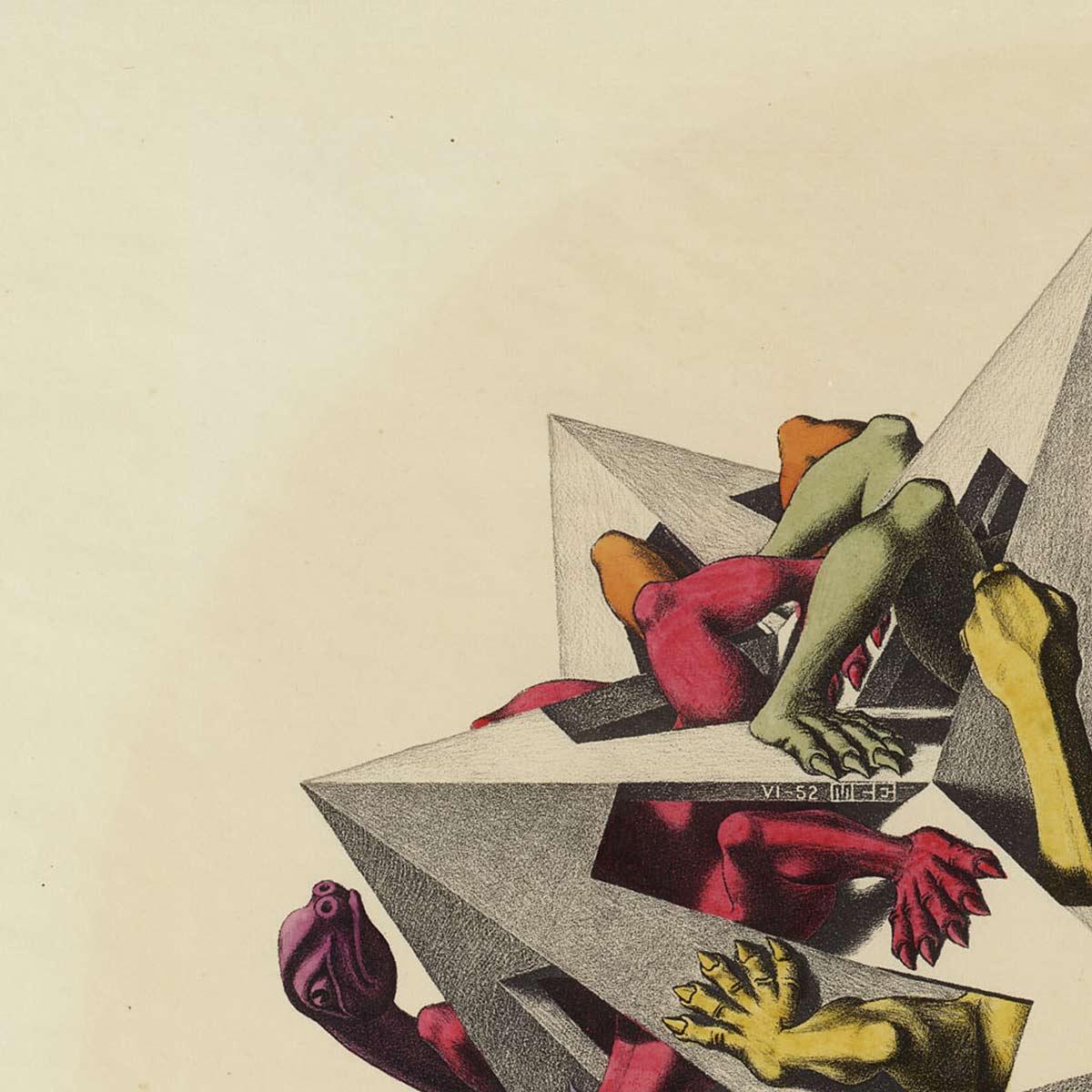
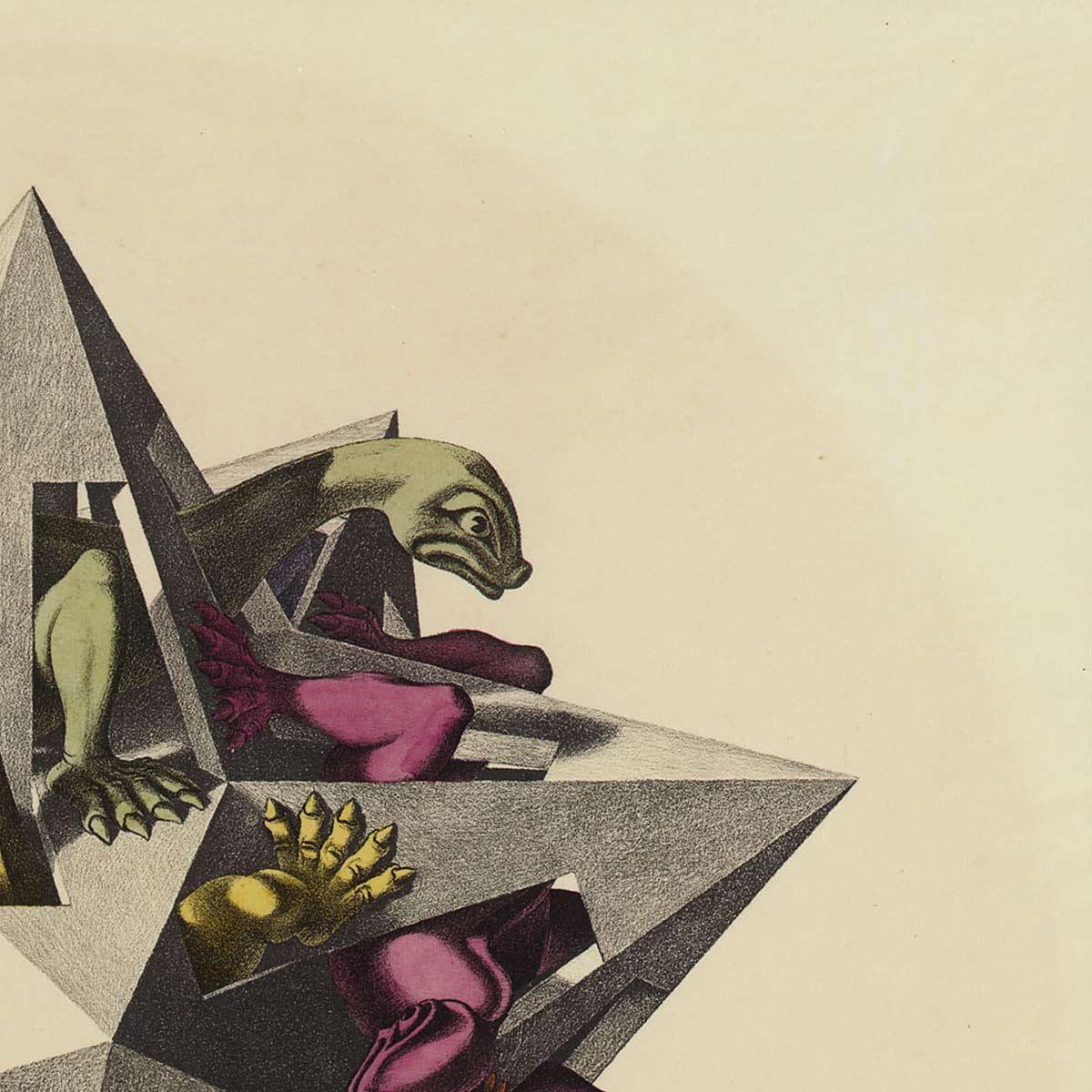
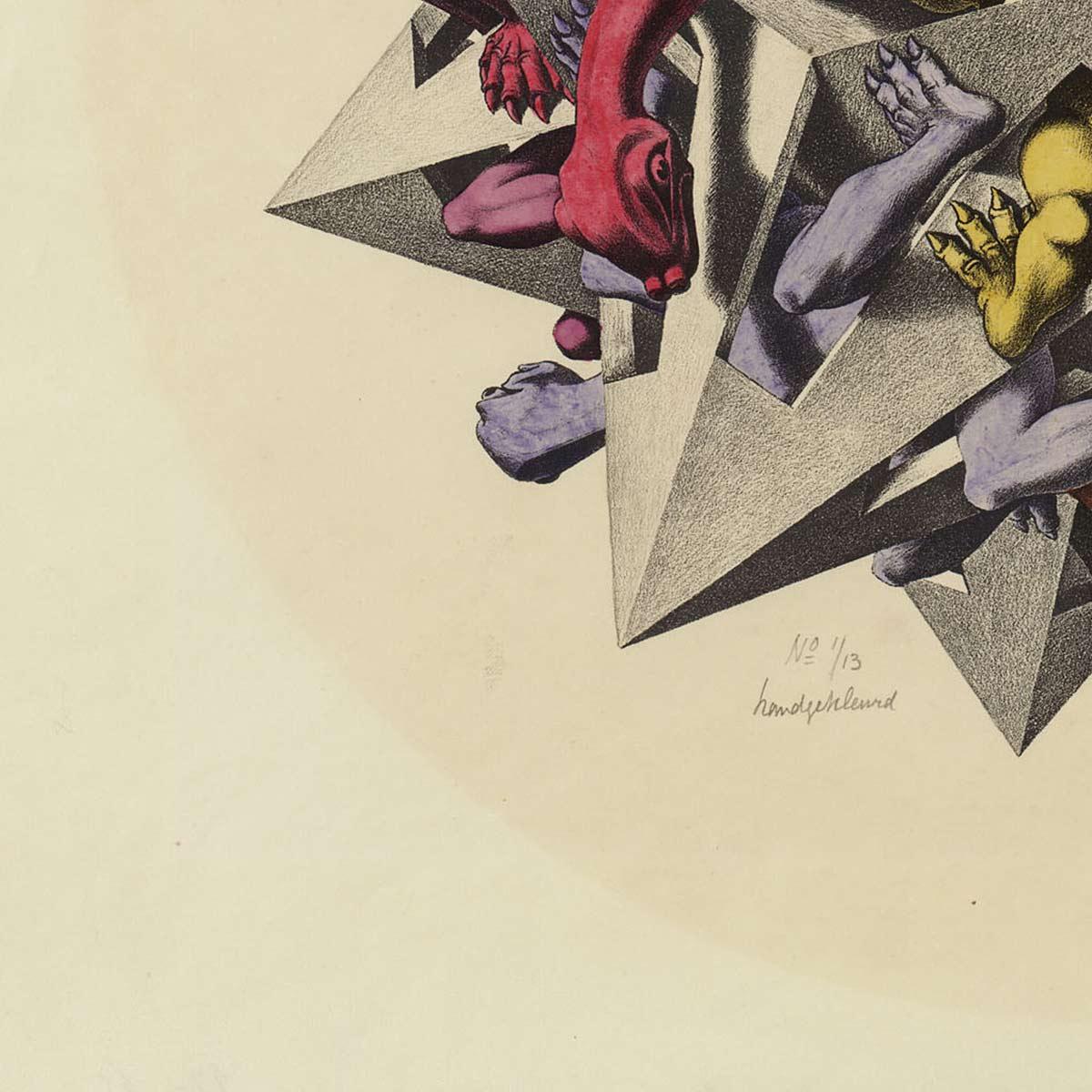
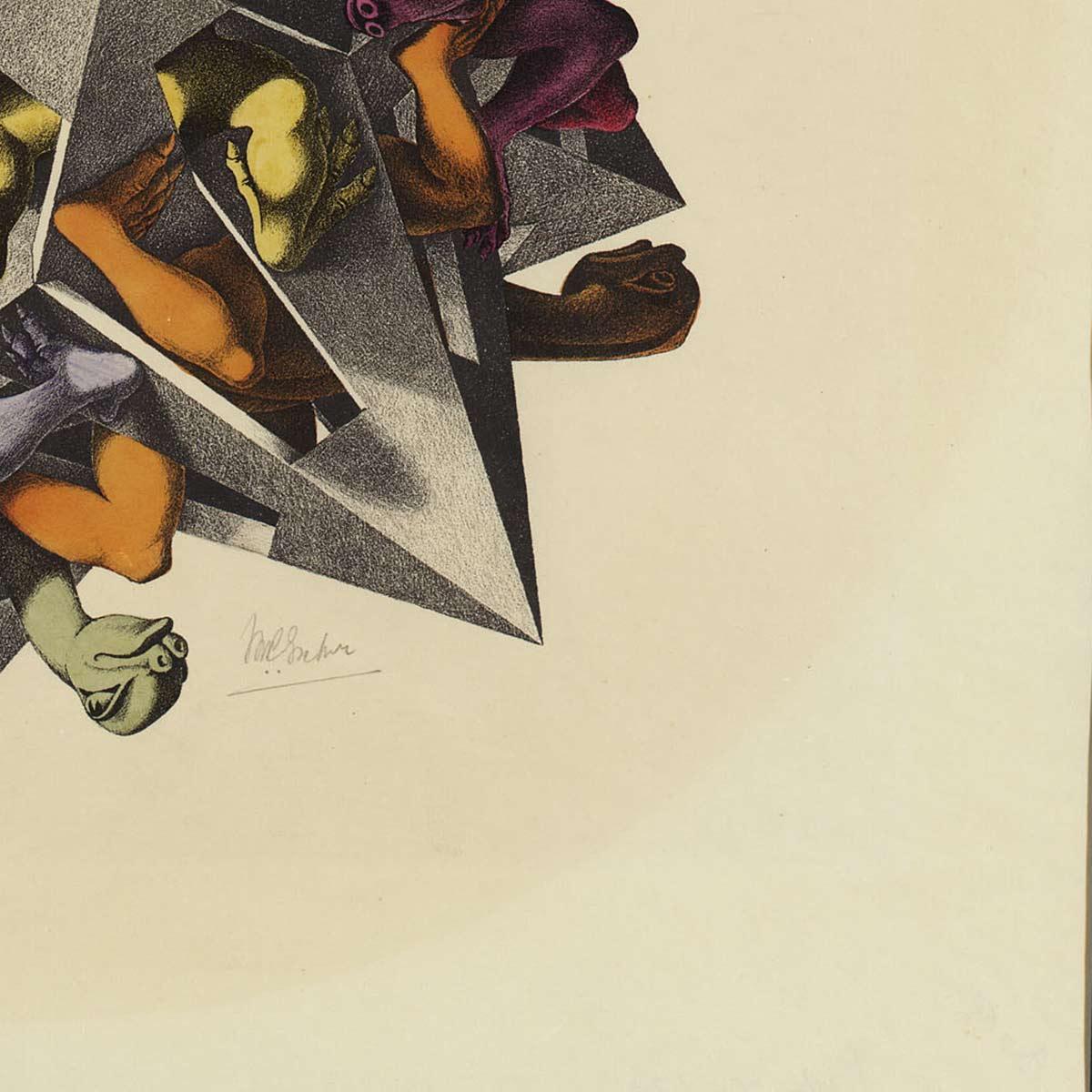
The math artist Hollister David, who is a big Escher fan, has created a three-dimensional version of Gravity using the turtles Escher himself once wanted to use.
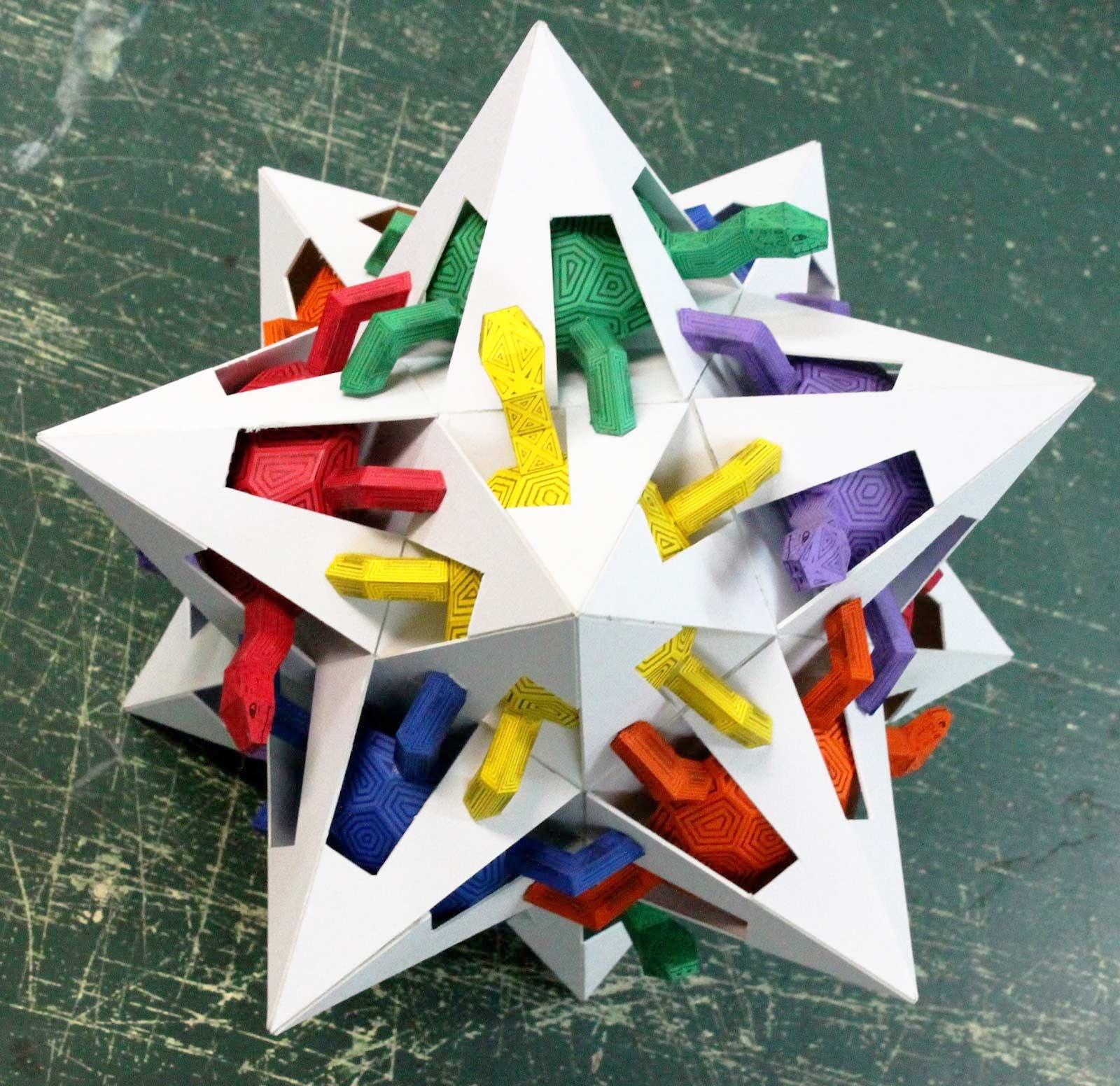
Source
[*] The Magic Mirror of M.C. Escher, Bruno Ernst, Taschen, 1976/2018, page 100
More Escher today

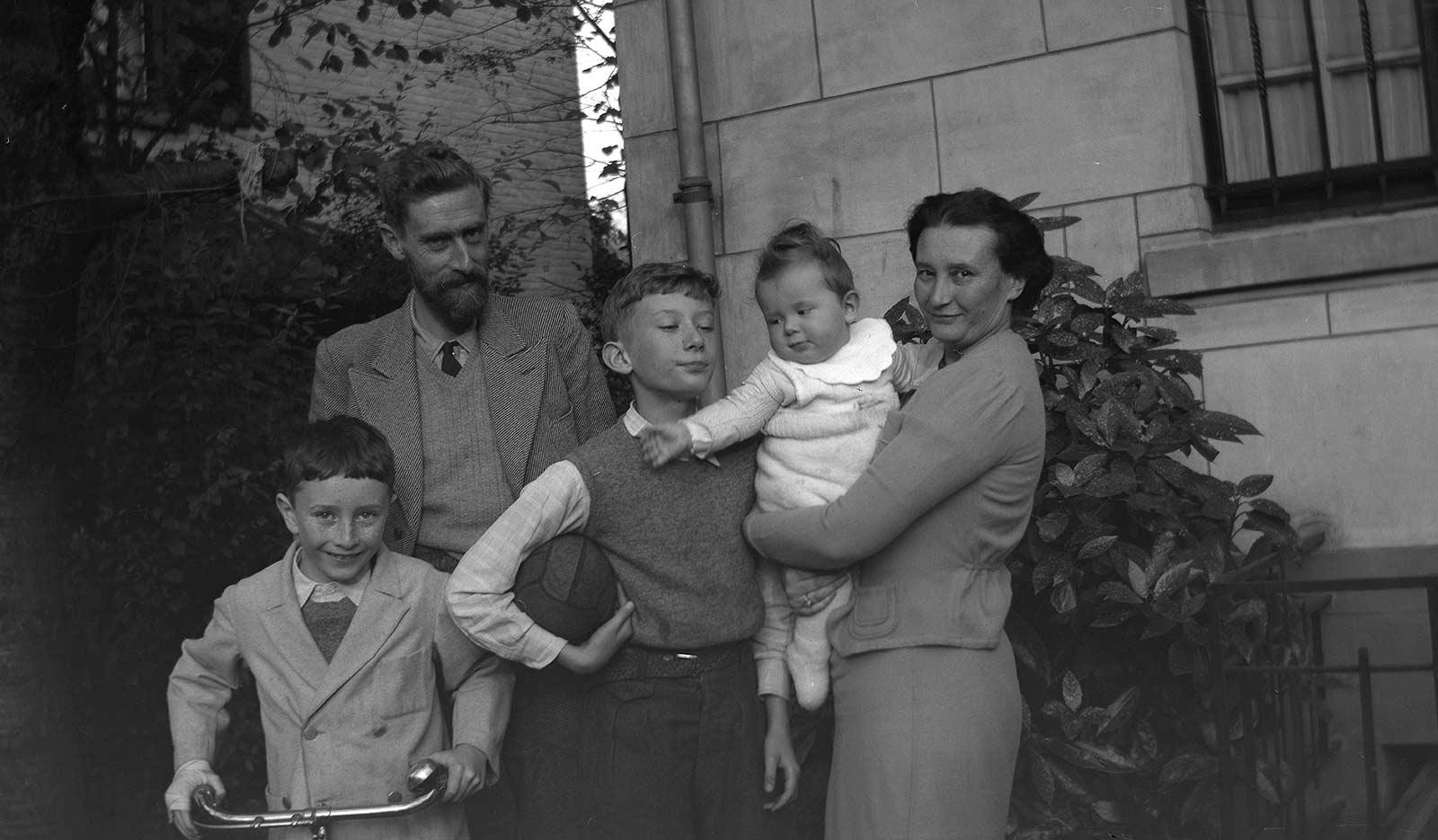
Birthday and Father’s day
